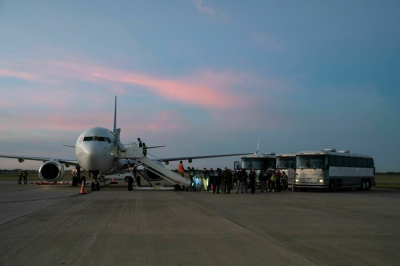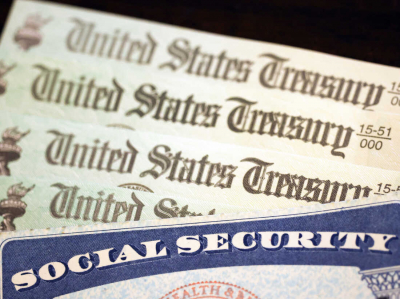
In 2023, the shadow of Canadian wildfire smoke draped over New York City, casting a pall of dangerously unhealthy air quality across vast swathes of the United States. Despite strides in improving air quality over the years, the latest State of the Air report from the American Lung Association (ALA) paints a troubling picture: over one-third of Americans, approximately 130 million individuals, are regularly inhaling air deemed unhealthy. This figure represents a concerning uptick, starkly contrasting with the nation's ongoing efforts to purify its atmosphere.
Climate change emerges as a formidable obstacle in this battle for cleaner air. Rising temperatures foster heightened ozone formation and exacerbate dust levels in the atmosphere. However, the most formidable challenge arises from the proliferation of wildfire smoke, infusing the air with hazardous fine particle pollution. States like California and Colorado find themselves wrestling with the paradox that despite successful endeavors to curtail industrial pollution, wildfire smoke threatens to undo their progress.
Katherine Pruitt, the national policy director at the American Lung Association, underscores the transformative impact of wildfires, both literal and figurative. Since the implementation of the Clean Air Act in 1970, the nation has witnessed substantial improvements in air quality. Measures such as mandating pollution control in vehicles and power plants have notably reduced fine particle pollution, known for its insidious ability to infiltrate deep into the respiratory system and bloodstream, precipitating a spectrum of chronic and acute health issues.
Despite these gains, the 2023 State of the Air report unveils a stark reality: while much of the country, particularly the eastern seaboard, has made significant strides in air quality, the western United States grapples with an unprecedented surge in days marked by perilous or extremely hazardous air quality, as measured by the Air Quality Index. This year marks a historic milestone as the 25 cities with the worst short-term particle pollution are exclusively nestled in the western regions.
The severity of the pollution is unprecedented," remarks Pruitt, encapsulating the urgent need for concerted action in combating this pressing environmental and public health crisis.
Susan Anenberg, an air quality authority from George Washington University and an EPA consultant, underscores a stark reality outlined in the report: addressing pollution has become increasingly complex. Over the past decades, regulatory measures tackled low-hanging fruit, such as installing catalytic converters in vehicles, diesel particulate filters in trucks, and scrubbers in power plants. However, Anenberg points out that the landscape has shifted. With the exacerbation of issues like ozone formation and wildfire smoke due to human-induced climate change, the easy victories are behind us. Anenberg stresses the imperative of concurrently addressing carbon emissions driving climate change while maintaining stringent regulations on air pollution.
The State of the Air report meticulously tracks particle pollution and ozone levels, both of which pose significant health risks, elevating the likelihood of respiratory ailments like asthma. Fine particle pollution, in particular, is associated with heightened cardiovascular risks and even the onset of dementia. Bakersfield, California, has persistently dominated the report's rankings as the U.S. city with the most acute short-term particle pollution for five consecutive years, now adding the ignominious title for year-round particle pollution as well. The area's heavy reliance on oil and gas extraction alongside intensive agricultural practices compounds local pollution burdens.
Jasmin Martinez, an advocate with the Central Valley Air Quality Coalition residing in the San Joaquin Valley, Bakersfield's locale, sheds light on the enduring struggle against pollution. Despite federal and state mandates aimed at curbing emissions, the valley remains shrouded in pollution, a stark reality Martinez confronts daily. The pervasive threat of air pollution weighs heavily on residents, with Martinez lamenting the toll it takes on their community's health and well-being.
The toll of air pollution extends far beyond individual communities, with tens to hundreds of thousands of premature deaths annually attributed to its insidious effects across the United States alone. Pruitt underscores the gravity of the situation, portraying air pollution as one of the most profound public health crises facing the nation.
In contrast, cities like Bangor, Maine, and Honolulu, Hawaii, stand out for their pristine air quality, offering a glimpse of hope amidst the prevailing challenges.
Despite significant strides in improving air quality across the United States following the implementation of Clean Air Act regulations, the benefits have not been equitably distributed. According to the latest report, communities of color and low-income individuals continue to bear a disproportionate burden of air pollution, a trend that persists into 2024. Approximately 130 million Americans reside in areas where particle or ozone pollution exceeds levels deemed healthy by the EPA, with around 70 million of them belonging to communities of color.
Katherine Pruitt emphasizes the alarming reality that people of color are more than twice as likely as their white counterparts to inhabit areas plagued by failing grades for both short and long-term particle pollution and ozone levels. Last year, the Environmental Protection Agency made a significant adjustment to its regulatory standard for PM2.5, lowering the permissible pollution threshold from 12 to 9 micrograms per cubic meter of air annually—a substantial tightening, notes Susan Anenberg. However, even this stricter standard remains well above the World Health Organization's recommended threshold of 5 micrograms or less.
The recalibration of standards revealed a sobering truth: the number of Americans exposed to unhealthy air surged from approximately 120 million in the previous report to roughly 130 million. Pruitt underscores the gravity of this revelation, emphasizing that many individuals have been breathing unhealthy air for years without official acknowledgment. Achieving compliance with the new standards will require concerted efforts over the coming years, but Pruitt welcomes the stringent regulations as a step in the right direction. She advocates for similar tightening of standards for ozone pollution in the future.
Meanwhile, Susan Anenberg highlights the compounding challenge posed by climate change, which exacerbates pollution levels. As the report underscores, ramping up efforts to mitigate carbon emissions is imperative to slow the pace of climate change, thereby curbing the influx of pollutants into the atmosphere. Simultaneously, Anenberg stresses the necessity of redoubling efforts to curb pollution at its source where feasible.
In essence, the report underscores the urgent need for a multifaceted approach to address the intertwined challenges of air pollution and climate change, with a renewed emphasis on environmental justice and equitable distribution of clean air resources.
In conclusion, the findings presented in the report underscore the persistent inequities in air quality distribution, with marginalized communities bearing the brunt of pollution burdens. Despite regulatory advancements, the revelation that millions of Americans have long been breathing unhealthy air serves as a stark reminder of the urgent need for further action. While the tightening of standards marks a step forward, achieving clean air for all will require sustained efforts and a commitment to addressing the root causes of pollution, particularly in communities disproportionately affected. As climate change continues to compound these challenges, there is an imperative to simultaneously combat carbon emissions and bolster pollution reduction strategies. Ultimately, prioritizing environmental justice and equitable access to clean air resources must remain central in our collective efforts to safeguard public health and mitigate the impacts of air pollution and climate change.





